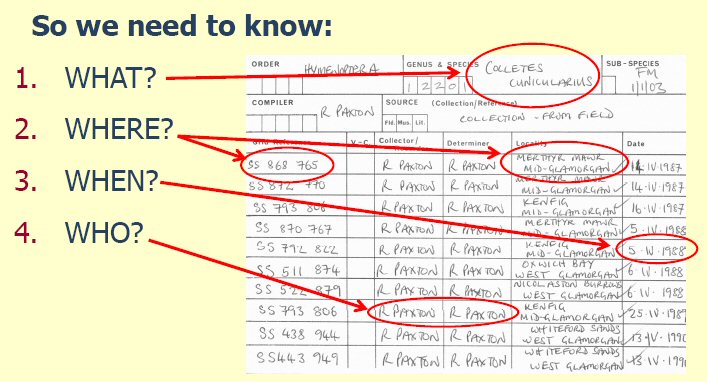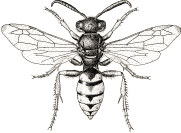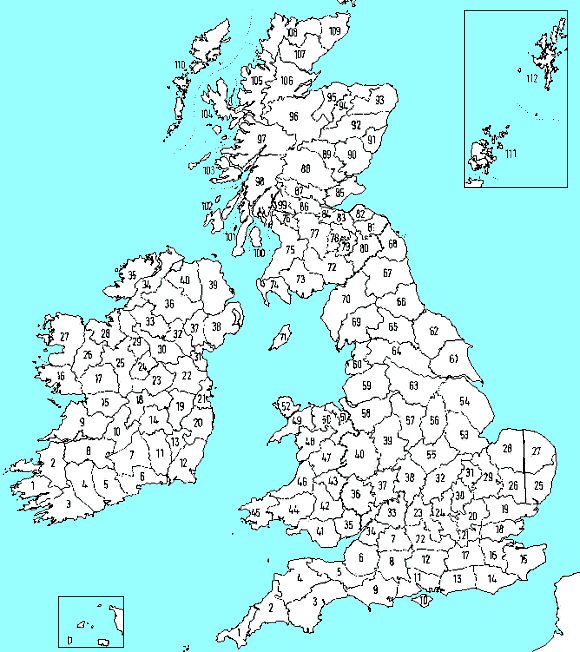Computerised records should be sent in by email as follow
Bees, Wasps and Ant Records for bulk data e.g. spreadsheet, Mapmate or Recorder data.
Clare Boyes: clarebwarsdata[at]gmail.com
Electronic (Digital) vs. Paper Records
Electronic records
BWARS encourages members to submit records electronically. There are two main advantages to the society in receiving electronic records:
- Electronic records save BWARS enormous amounts of time in entering data onto mapping programmes.
- It is very easy to track records when using electronic databases. This means that it is straightforward for BWARS to find all records for a particular species, county, recorder, or other facet of a record.
Paper Records
If you are unable to submit electronic records, then BWARS is prepared to accept paper records.
Verifying your records
Many species of aculeate hymenoptera require critical determination, so recorders should always retain voucher specimens, either at home or by donating them to an appropriate Museum collection. Specimens must always be accompanied by accurate data labels providing details of the location and date of capture.
**IMPORTANT**
Recorders who are new to aculeate hymenoptera are advised to seek verification of difficult specimens by experienced BWARS members. For advice on identification of specimens from photographs, post your photographs to iRecord or seek assistance via the BWARS run UK Bees Wasps and Ants Facebook page.
How to submit your records
It is important that the data submitted - be it in computer readable form or not, contains the minimum information, detailed here, in the agreed format and preferably order.
For each record please give:
- The Species name - the most up to date names can be downloaded here
- An Ordnance Survey Grid Reference (6 figure)
- Locality - the name of the locality, preferably as named on an OS map
- Date of the record. Give this as an ISO date in the form yyyy-mm-dd e.g. 1st July 2006 will be 2006-07-01. IT IS VITAL THAT THIS FORMAT IS USED. If the actual day is not known use 00 for the date of the day.
- Collector - the name of the person who made the record
- Determiner - the name of the person who identified the species recorded
- Source of the data: If a voucher has been held, describe where it is held (for species that are difficult to determine a voucher should always be retained)
- Watsonian Vice County name - see a map showing the Watsonian Vice County numbers
- Watsonian Vice County number. To confirm which vice county your record is in use the Botanical Society's vice county look-up tool
- A combined vice-county/grid reference look up tool provided by Charlie Barnes (VC 53 & VC54 Coleoptera Recorder)
- Grid Reference look up tool. Input Post Code or address to grab a Grid Reference
- Further information - if you have any further information related to the record state yes or no. This may be useful for research purposes later.
For paper records please use GEN7 or GEN13 record cards. Available from the Biological Records Centre under their General cards
Need to find a grid reference?
- Try the Bedfordshire Natural History Society's excellent grab a grid reference tool which includes aerial photography via Googlemaps
For Channel Islands records, advice on recording locations is given here
Computerised records should be sent in by email as follows
1. Bees, Wasps, Ants and Mixed Records
For bulk data e.g. spreadsheet, Mapmate or Recorder data.
Clare Boyes: clarebwarsdata[at]gmail.com

Halictus rubicundus
Drawing: Geoff Allen

 Philanthus triangulum
Philanthus triangulum
Drawing: Geoff Allen


